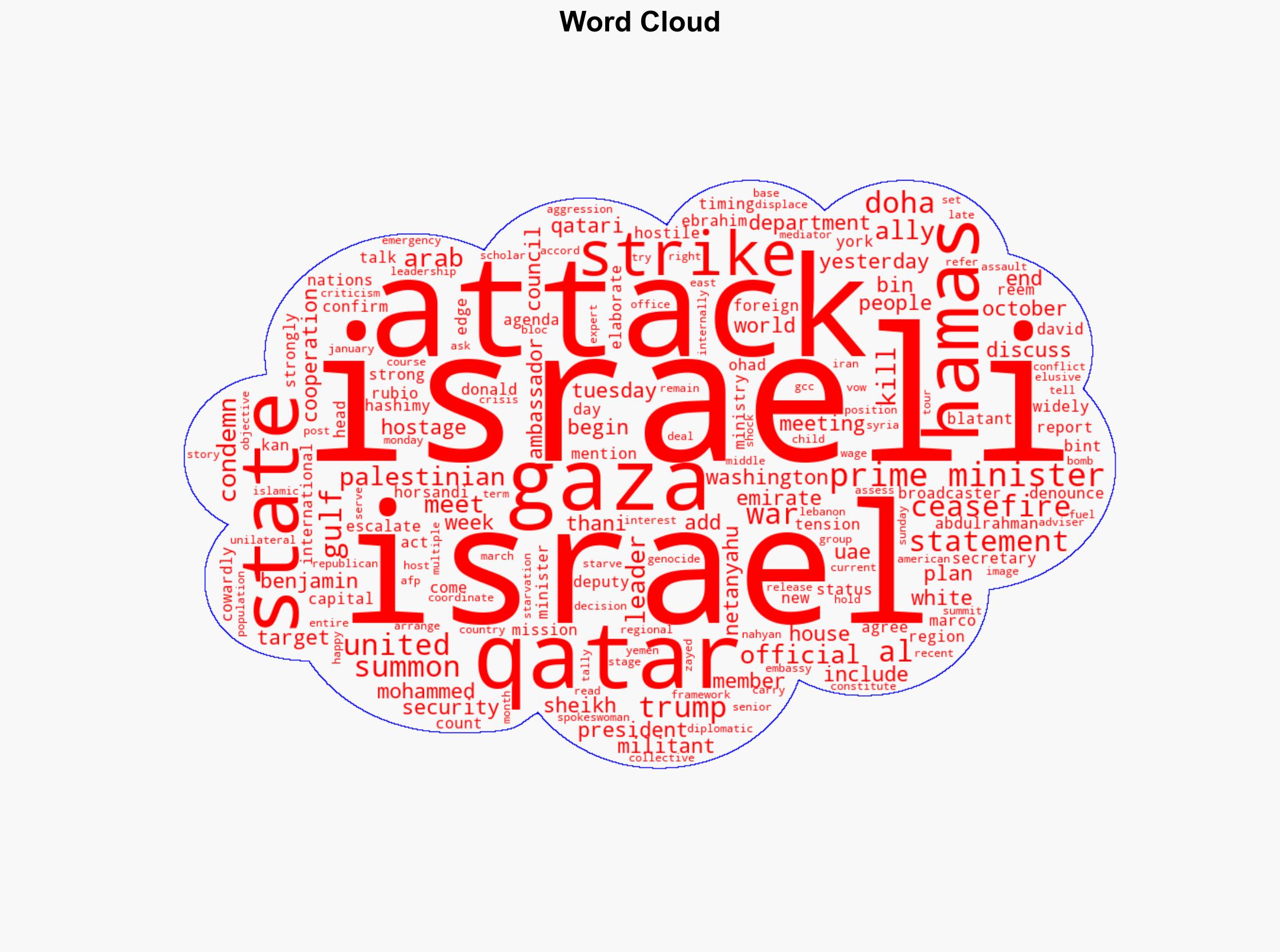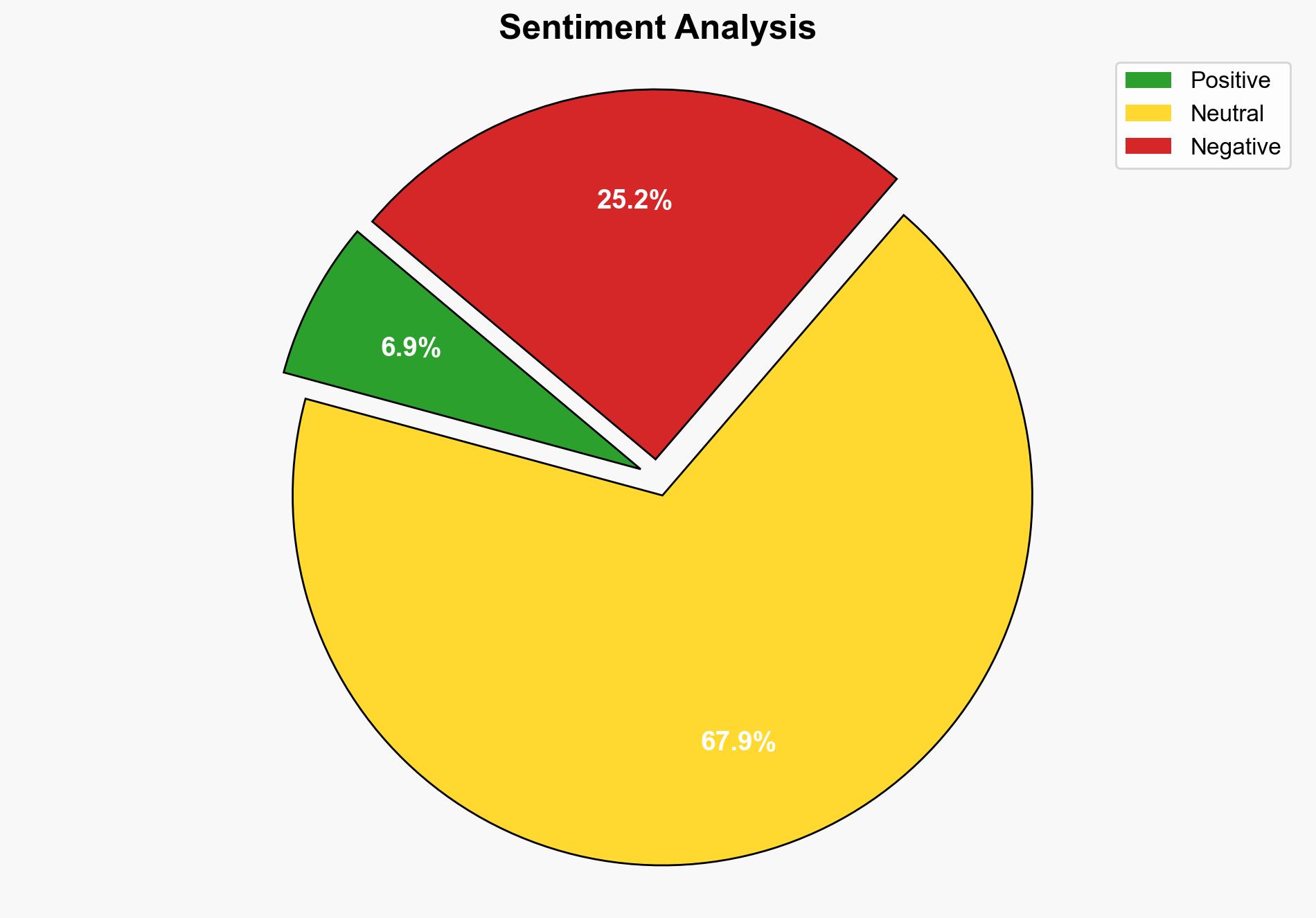Qatari PM to meet US officials days after Israeli attack – RTE
Published on: 2025-09-12
Intelligence Report: Qatari PM to meet US officials days after Israeli attack – RTE
1. BLUF (Bottom Line Up Front)
The most supported hypothesis is that the meeting between the Qatari Prime Minister and US officials aims to mediate a ceasefire between Israel and Hamas, with a medium confidence level. The strategic recommendation is to support diplomatic efforts for de-escalation while preparing for potential regional instability.
2. Competing Hypotheses
Hypothesis 1: The meeting is primarily focused on mediating a ceasefire between Israel and Hamas, leveraging Qatar’s role as a mediator and its influence in the region. This hypothesis is supported by Qatar’s history of mediation and the timing following the Israeli attack, which has escalated tensions.
Hypothesis 2: The meeting is part of a broader strategic alignment between the US and Qatar, addressing not only the Israeli-Hamas conflict but also regional security concerns, including Iran’s influence and the stability of the Gulf Cooperation Council (GCC). This hypothesis considers the broader geopolitical context and recent diplomatic activities in the region.
3. Key Assumptions and Red Flags
Assumptions:
– Qatar maintains a neutral stance and can effectively mediate between Israel and Hamas.
– The US is actively seeking a de-escalation in the region.
Red Flags:
– Lack of detailed information on the meeting agenda raises questions about the true objectives.
– Potential bias in reporting, given the polarized nature of the conflict.
4. Implications and Strategic Risks
The meeting could either lead to a de-escalation or further complicate regional dynamics if perceived as biased. A failure to mediate effectively might embolden hardline elements within Hamas or Israel, increasing the risk of broader conflict. Economic impacts could include disruptions in energy markets if tensions escalate.
5. Recommendations and Outlook
- Support diplomatic channels to facilitate a ceasefire, leveraging Qatar’s mediation role.
- Prepare for potential regional instability by enhancing intelligence monitoring of GCC states and Iran.
- Scenario Projections:
- Best Case: Successful mediation leads to a sustained ceasefire and reduced regional tensions.
- Worst Case: Failed talks result in increased hostilities and regional destabilization.
- Most Likely: Short-term de-escalation with ongoing underlying tensions.
6. Key Individuals and Entities
– Sheikh Mohammed bin Abdulrahman Al Thani
– Donald Trump
– Benjamin Netanyahu
– Marco Rubio
– Reem Bint Ebrahim Al Hashimy
7. Thematic Tags
national security threats, regional diplomacy, conflict mediation, Middle East stability





